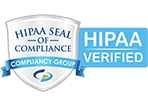7 Ways to Stay Driving Safe in the City
City driving isn’t for the faint of heart. It’s a chaotic symphony of honking horns, impatient pedestrians, and traffic snarls that can make even the calmest drivers break a sweat. So, how can you stay safe on the city streets? We’ve got your back with 7 essential safe driving tips to help you conquer the concrete jungle and arrive at your destination in one piece (and with your sanity intact).
- Be a Defensive Driver. Expect the unexpected. In the city, anything can happen—pedestrians darting into the street, cyclists weaving through traffic, double-parked cars blocking your lane. Stay alert, anticipate potential hazards, and always be prepared to react.
- Follow the 3-Second Rule. Tailgaters are the bane of every driver’s existence—but instead of getting road rage, give yourself a cushion. Maintain a three-second following distance between your car and the one in front of you. You’ll have more time to react if the car in front of you suddenly brakes or swerves.
- Ditch the Distractions. Put down your phone, silence those notifications, and focus on the task at hand—driving. Distracted driving is a leading cause of accidents, and in a bustling city environment, it’s even more important to stay focused. If you need to make a call or send a text, pull over to a safe location first.
- Know Your Blind Spots. Your car’s blind spots are those sneaky areas where other vehicles can disappear from your view. Get familiar with your blind spots and always double-check them before changing lanes or merging. A quick glance over your shoulder can save you from a nasty collision.
- See and Be Seen at Night. Driving at night in the city can be tricky, with reduced visibility and increased pedestrian activity. Make sure your headlights are in good working order, use your high beams when appropriate, and be extra cautious around crosswalks and intersections.
- Be Patient. Traffic jams are an inevitable part of city life. Instead of getting frustrated and honking your horn, take a deep breath and try to relax. Listen to a podcast, catch up on your favorite audiobook, or simply enjoy the scenery. Remember, getting angry won’t make the traffic move any faster.
- Plan Your Route (and Have a Backup). Before you hit the road, map out your route and check for any traffic alerts or road closures. Having a backup plan in case of unexpected delays can save you time and frustration.
Accidents Happen. Be Prepared, and Know That Impact Medical Group Has Your Back
Even the most cautious drivers can find themselves in an accident. If you’re injured in a crash, Impact Medical Group of Tampa is here for you. We specialize in accident-related injuries, providing comprehensive care to help you heal and recover. Call us today at (813) 283-1910 to schedule your free medical evaluation and ensure you get the care you deserve.
